Review: Alcatel Fierce XL with Windows for T-Mobile
Mar 8, 2016, 7:00 AM by Eric M. Zeman
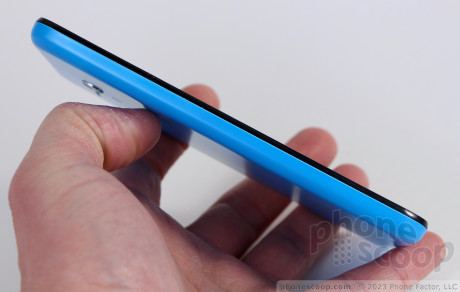
Alcatel ported Windows 10 to its Fierce XL handset and the result is a low-cost point of entry to Microsoft's ecosystem of productivity apps. The Fierce XL with Windows in a simple smartphone that impresses and bores at the same time. Here is Phonescoop's in-depth report.
Hardware
Is It Your Type?
The Alcatel Fierce XL is one of the least-expensive Windows 10 handsets on the market. It's also the only one being sold officially by T-Mobile. If you're on a tight budget and already invested in Microsoft's ecosystem, the Fierce XL is a low-cost point of entry.
Body
The Fierce XL is a pretty blunt device. It's big, heavy, and relies on a pedestrian design that is plain almost to a fault. It's also sort of a copycat.
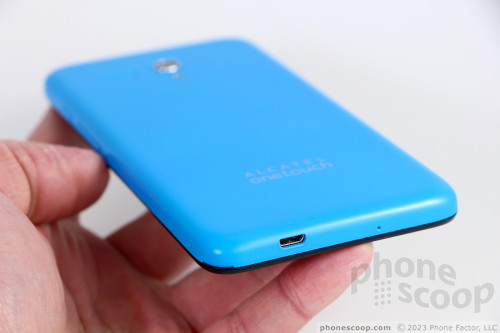
The XL first arrived last fall as an Android handset. This version of the phone runs Windows 10 from Microsoft, but otherwise the hardware is identical. The only other phone maker that has stuffed Windows into a former Android handset in the U.S. is HTC, which did the same thing with the One M8. (Honestly, I'm not sure why we haven't seen more of this from Android phone makers.)
This handset is a simple slab. The shape and overall appearance are rather boring. The four corners are rounded nicely, but the side edges have a generic curve to them and the back panel is flat and lacking personality. The glass of the front panel is fitted into a plastic frame that sits in a polycarbonate shell. The most exciting thing the XL has going for it is the color. Alcatel dropped the gray coloring of the Android XL in favor of a cyan rear shell for the Windows XL. Too bad Nokia did this years ago with the Lumia 800 and myriad other handsets. The XL's color strikes me as a bit unoriginal.
Most would classify the XL has a phablet. The 5.5-inch screen and chunky bezels push the phone out in all directions. It's 5.98 inches tall, 3.06 inches wide, 0.37 inches thick, and weighs in at a mighty 6.14 ounces. The XL is definitely toward the bigger end of the handset sizing spectrum.
If you have small hands, the XL may not be the best choice for you; it's a two-handed phone for sure. The phone's smooth plastic skin means it won't catch on your pocket liners, but the XL's footprint means you always know it's in your pocket. The build quality and materials are decent, but not the best I've seen. I saw some variation in the uniformity of the polycarbonate shell, but the seams were mostly tight.
Alcatel took a straightforward approach to crafting the XL's front surface. A chrome grille covers the earpiece speaker above the display and the three capacitive buttons are painted onto the glass below the display. These are the only things that are noticeable from afar. The screen when off is a dark gray that stands out from the black glass around it, which is a characteristic I don't like on any phone. The buttons work well enough.
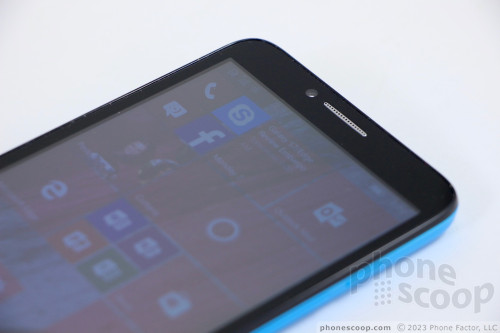
The screen lock button and volume toggle are placed on the right edge of the phone. The screen lock button is closer to the top. I wish their positions were reversed, as I often found myself hitting the volume button when I meant to wake the XL. The buttons are both narrow strips with low profiles. The profiles could be better, as could the travel and feedback. The headset jack is built into the top edge and the micro USB port is built into the bottom. This is a pretty standard configuration. There are no controls along the left edge, which is smooth.
The rear surface is mostly flat and empty space. The camera module is positioned close to the top edge and has a chrome rim that makes it stand out visually. The rim has a physical profile, as well, and protrudes a bit from the phone's back surface.
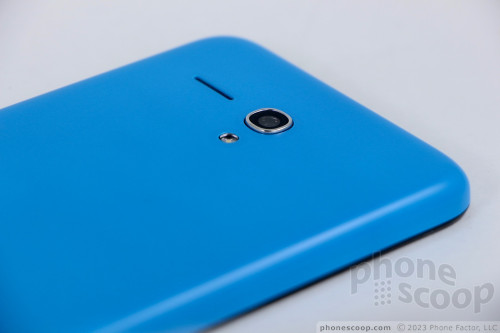
The entire back panel lifts off easily thanks to a notch carved into the lower corner. Despite the removable panel and sheer size of this phone, the battery is sealed inside. Slots for memory and SIM cards are available underneath the cover.
The Alcatel Fierce XL is a perfectly functional and serviceable piece of hardware, it's just a bit uninspired to my eyes.
Screen
The display measures 5.5 inches across the diagonal and has 720p HD resolution. That gives it a pixel density of about 267ppi, which isn't bad considering the phone's low price. I compared it side-by-side with the quad HD screen of the Lumia 950 and the Fierce XL's display holds its own against the far more pixel-rich flagship. The XL's screen delivers pleasing color, nice contrast, and sharp (enough) on-screen elements, such as text and icons. I was only able to spot pixels if I held the phone right up to my eyes. I did have to set the brightness up all the way to use the phone outdoors, but viewing angles are quite good.
Signal
The Fierce XL operates on T-Mobile's LTE network and I found it to perform on par with other phones I've tested on T-Mobile in the metro NYC area. Calls generally connected on the first attempt and didn't disconnect as I traveled around via car. T-Mobile's LTE service was always available to the phone while I reviewed the device and data speeds were decent. I've seen faster speeds on other T-Mobile devices, but the Fierce XL did well enough.
Sound
I was pleased with the XL's call quality, which I'd rate as above average for a T-Mo phone. The earpiece produced crisp, clear voices that were a breeze to hear thanks to the solid amount of volume delivered by the phone. I had no trouble holding conversations at home, in busy coffee shops, when walking around town, or in the car. Two dozen screaming 9-year-old girls were, however, able to overwhelm the XL's earpiece when I used it to order pizza for my daughter's birthday party; I had to step outside for that call. On the plus side, the guy taking my order on the other end of the phone said he could hear me, chaos be damned.
The speakerphone isn't quite that good. Quality is solid enough, but volume drops significantly. I was still able to use it in quiet places with no issue, but loud spaces will more easily overwhelm it.
Ringers and alerts had no trouble finding my ears, but the vibrate alert is far too subtle.
Battery
I'm rather stunned that such a large phone has a mere 2,500 mAh power cell inside. However, the phone pushes through a full day on a consistent basis. I was worried the XL wouldn't last to dinner, but found the battery still had plenty of life left come bedtime. The XL's lower-resolution screen and entry-level processor probably help keep power demand low. Alcatel did a good job tuning the battery to the Fierce XL's needs.
Windows 10 includes some pretty powerful power-management tools, though I doubt you'll need to tap into them. The battery dashboard offers a detailed look at what apps are using power and estimates how much time remains. Moreover, you can control when the battery saver software kicks in. You can even set exceptions, allowing some apps to perform at full power even if the battery saver is on.
The XL doesn't include rapid charging, nor wireless charging.
Bluetooth, GPS, NFC, WiFi
I didn't encounter any issues when using the XL's various other radios. The Bluetooth radio paired with my car, headsets, and PCs without problem. Call quality through a mono headset was decent. Music sounded OK when played via Bluetooth speaker, but I've heard much better. The XL doesn't have an NFC radio, so I had to pair everything manually (oh, the horror!)
The GPS radio worked well with the mapping software on the XL. The phone was able to locate me swiftly, but accuracy varied a bit, often stretching to 100 feet or more. Most phones can pinpoint you down to about 25 feet; the best know where you are within 5-10 feet. I was surprised to see the XL's accuracy a bit soft, even when using GPS, WiFi, and cell triangulation for location. At least Windows' mapping software is great.
The WiFi radio pushed bits back and forth effortlessly.
Software
Lock Screen
Microsoft has done a good job refining the lock screen experience for Windows-based handsets. The Fierce XL's Windows 10 operating system helps deliver useful nuggets of information when they're needed most.
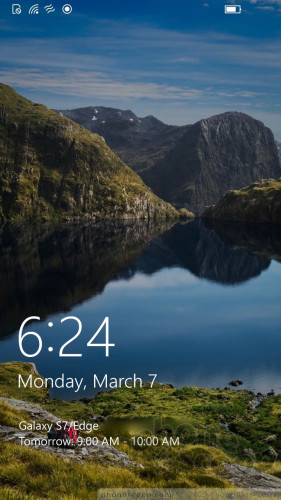
The XL doesn't have the Glance Screen available to Lumia-branded handsets, but its lock screen shows a large clock, the date, and user-customizable notifications on top of your wallpaper. You have to press the screen lock button to view this information. You can elect to show notifications from several apps, one of which is prioritized on the lock screen itself. I selected the calendar app, which is why you see my girls' dentist appointment in the photo below. Had I selected email or messaging, the most recent missive would be there instead.
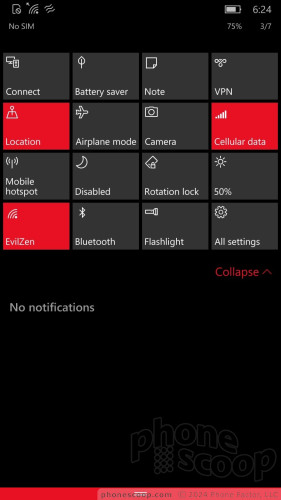
You can choose whether or not the Action Center is accessible from this screen. The Action Center (which is similar to Android's Quick Settings menu) drops down for access to certain controls and in-depth notifications.
The Fierce XL does not have a fingerprint sensor, so you need to use a standard PIN or password to secure it.
Home Screens
Microsoft does not allow its handset partners to alter the behavior of Windows 10 Mobile, so the user interface of the XL is more or less identical to that of other Win10 phones.
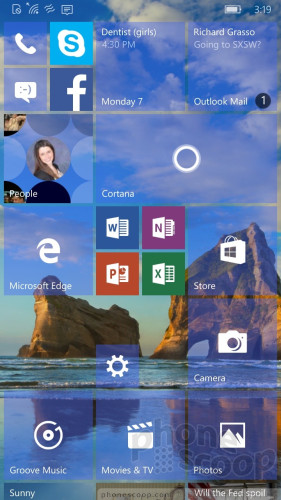
You can arrange the Live Tiles into three columns, and the tiles are available in small, medium, and large sizes. Many of the Live Tiles update automatically with content and notifications, while others are just app icons. I like that you can manage the transparency of the tiles. The Start screen, arranged in an unending vertical column, supports folders.
The full app menu is a long list of apps sorted alphabetically. A search bar at the top is the quickest way to find apps if you have a lot installed.
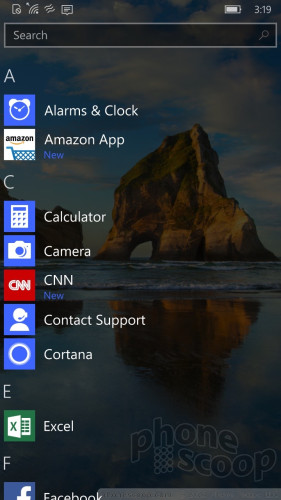
The system settings are broken down into groups and each group clearly spells out what controls or tools are within. As in the app menu, the search bar makes finding individual settings a breeze. You can make all the typical adjustments to the phone, such as wallpapers, colors, themes, ringers and alert sounds, and so on. It's all fairly easy to digest.
I found the XL to be much more stable out of the box than Microsoft's own Lumia 950. The XL runs the very latest version of Windows 10 Mobile, which didn't exhibit any bugs or weirdness while I tested the phone. If you're worried about performance, let me assure that the XL feels quick even with Qualcomm's entry-level 1.1 GHz Snapdragon 200 processor under the hood. A few apps were a bit sluggish, but the overall experience was good enough.
Camera
The XL does not have a dedicated camera button. The only way to launch the camera is to press the screen lock button, unlock the phone, and then launch via the Start screen shortcut. It's a process. The XL uses the default Windows 10 camera app, which is straightforward and easy to use. Actually, it's simple to a fault.
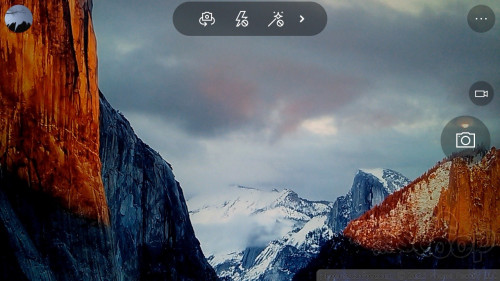
There are separate on-screen shutter buttons for still and video. You can program the camera button to take single images, or fire a burst / shoot video with a long press. You can touch the image to lock in focus, but you have to use the shutter button to capture images.
A small strip adorns the top of the viewfinder and holds the controls that let you switch to the user-facing camera, toggle through the flash settings, and turn HDR on or off (there's no “auto” HDR setting). The strip expands to reveal the Pro shooting tools if you want it, which includes full manual controls. When in Pro mode, you can manage white balance, exposure, ISO, brightness, and focus all on your own. Sadly, shutter speeds are limited to 0.5 seconds at the slowest, which limits creative potential.
Beyond these tools, there are no other shooting modes. For example, there's no panorama, no bokeh, no filters, no timelapse, no sport mode, no night/evening mode, etc. You can choose to download Lenses from the Windows Store, which add some of these features to the camera, but the Lumia-branded Lenses are off limits.
Unfortunately, the camera suffers from slow performance. It takes a painfully long time for the phone to focus, capture images, save them, and get ready to shoot another images — probably 2+ seconds in total. It's way too slow, and you can see that in the results below.
Photos
Alcatel gave the XL an 8-megapixel camera. The camera app defaults to the 16:9 aspect ratio, which crops images to 6.2 megapixels. You need to change the setting to 4:3 to get the full pixel count.
The camera is really inconsistent. About one-third of shots were good, one-third were acceptable, and the last third were total trash. Frustratingly, it wasn't any one aspect of the camera that was troublesome. On some shots focus was great, but exposure was awful. On others focus was awful and exposure was a nightmare. White balance was more consistently accurate than focus or exposure, but that's not saying much. I would say the camera's slow speed caused a lot of the focus problems.
The XL is passable when shooting during the day or in other bright settings, but low-light environments were a real challenge to the XL's camera.
The 2-megapixel selfie camera is practically worthless. Images are sodden with grain and rarely have sharp focus.
Video capture can be set as high as 720p HD, which we can probably blame on the Snapdragon 200 processor. The video I shot with the XL was generally better than the still imagery, but not by a lot. Focus was soft throughout and exposure was all over the place. In particular, the phone had trouble adjusting between bright and dark scenery.
The Fierce XL can manage for everday imaging and video, but just barely. Definitely use a real camera for stuff that's important to you.
T-Mobile / Microsoft Stuff
T-Mobile kept the bloatware to a minimum. In fact, the T-Mobile TV app is the only one pre-installed. The phone is compatible with T-Mobile's WiFi Calling and HD Voice features.
Microsoft's Office productivity suite is on board, and includes Word, Excel, PowerPoint, OneNote, and OneDrive. The apps are excellent for making quick edits or creating new documents. OneDrive automatically syncs everything so your files are accessible from anywhere. The utility of these apps cannot be understated. They're fantastic. The same goes for the Outlook email app, and the Edge browser. Let's not forget the Cortana voice assistant, who gets smarter every day.
The XL does not include the Continuum feature, which would allow it to serve as a PC when connected to the appropriate set of accessories. (That requires much beefier innards.)
Wrap-Up
Alcatel is known for churning out low-cost handsets that provide a reasonably good experience for the dollar. That's about exactly what the Fierce XL does. It delivers Windows 10 in a handset friendly to every budget.
The XL has a nice, big screen, but plain styling and average build quality. The phone performs well on T-Mobile's network, which means call quality is good and data speeds are quick. The battery does a great job, but Bluetooth and GPS performance were average. The camera is a disappointment.
The Windows 10 platform covers the basics in terms of core features (email, browser, Facebook, games), but lacks the depth of apps available to Android and iOS devices. Windows' real strength is found in its Office suite, which syncs seamlessly across devices. It's a boon to those who need to be productive.
At $140 for full price, or less than $6 per month, the Alcatel Fierce XL is a bargain. It's one of the cheapest Windows 10 handsets in the market. If you're a long-time Android user just looking for something different, don't bother. But if you're specifically seeking an inexpensive avenue in Windows 10, the Fierce XL provides that route.
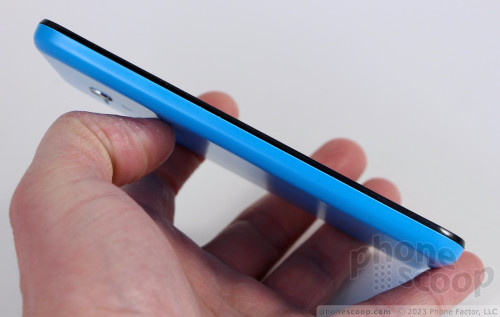
Comments
Cortana and hands-free
One thing Windows Phone and Windows 10 Mobile reviewers always seem to miss is the phenomenal capability of Cortana combined with either a Bluetooth headset or earbuds for safe, efficient hands-free use, either while driving, or working around the house:
1) Listen to and REPLY TO texts without touching the phone, using strictly voice.
2) Dictate emails through the headset.
3) Bring up specific webpages without touching the phone, for example "Open webpage Sigalert.com" and it displays the page without requiring any touch input.
4) Initiate navigation without touching the phone: "Directions from current location to Cheesecake Factory in Pasadena, California"....
(continues)


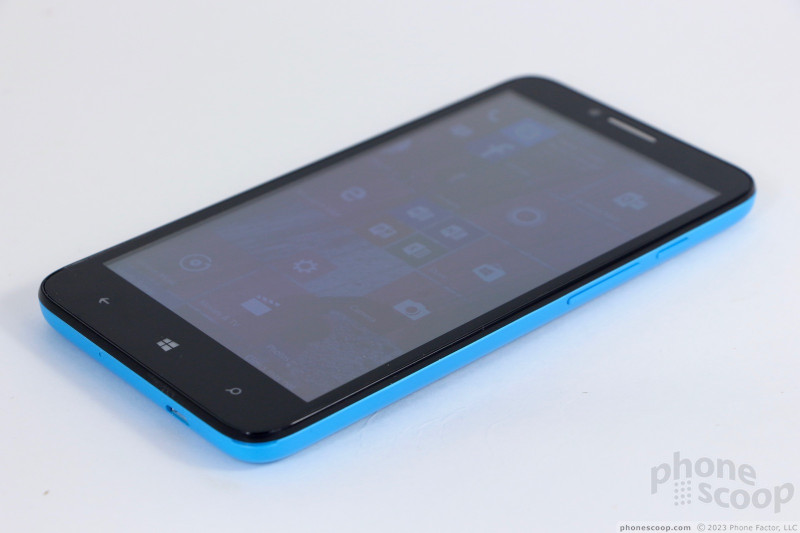














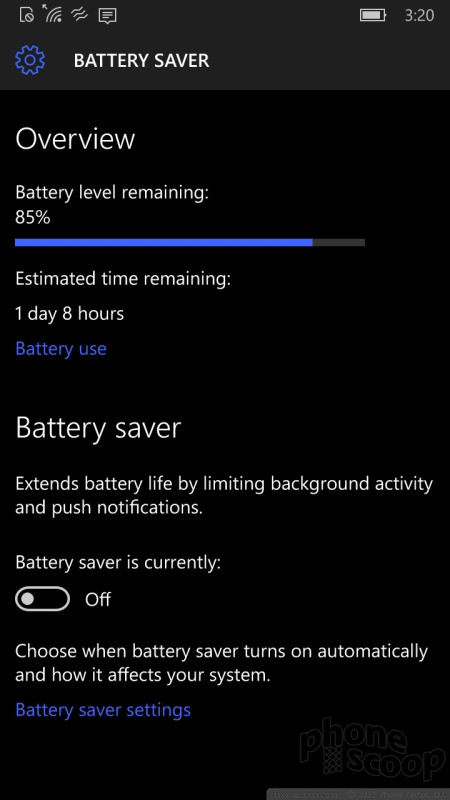




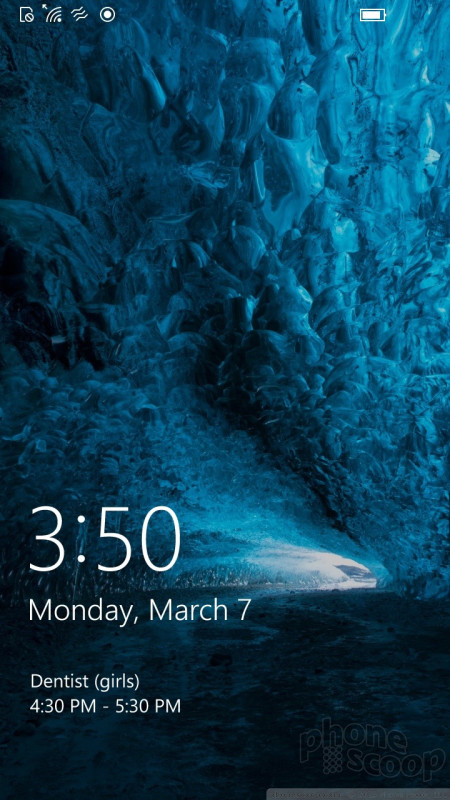











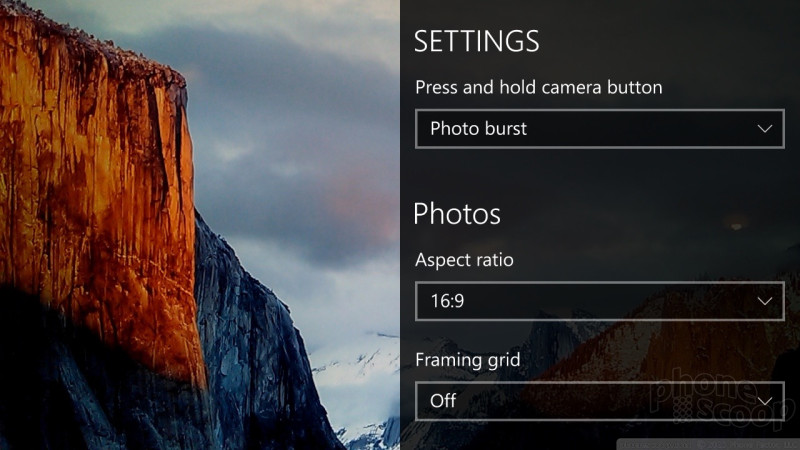





















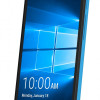 Alcatel Windows 10 Fierce XL Hits T-Mobile's Site
Alcatel Windows 10 Fierce XL Hits T-Mobile's Site
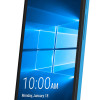 Alcatel Adds Windows 10 to the Fierce XL
Alcatel Adds Windows 10 to the Fierce XL
 iPhone 15 Series Goes All-In on USB-C and Dynamic Island
iPhone 15 Series Goes All-In on USB-C and Dynamic Island
 Samsung S24 Series Adds More AI, Updates the Hardware
Samsung S24 Series Adds More AI, Updates the Hardware
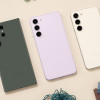 Samsung Puts its Best Camera Yet in the Galaxy S23 Ultra
Samsung Puts its Best Camera Yet in the Galaxy S23 Ultra
 Alcatel Fierce XL with Windows 10
Alcatel Fierce XL with Windows 10





